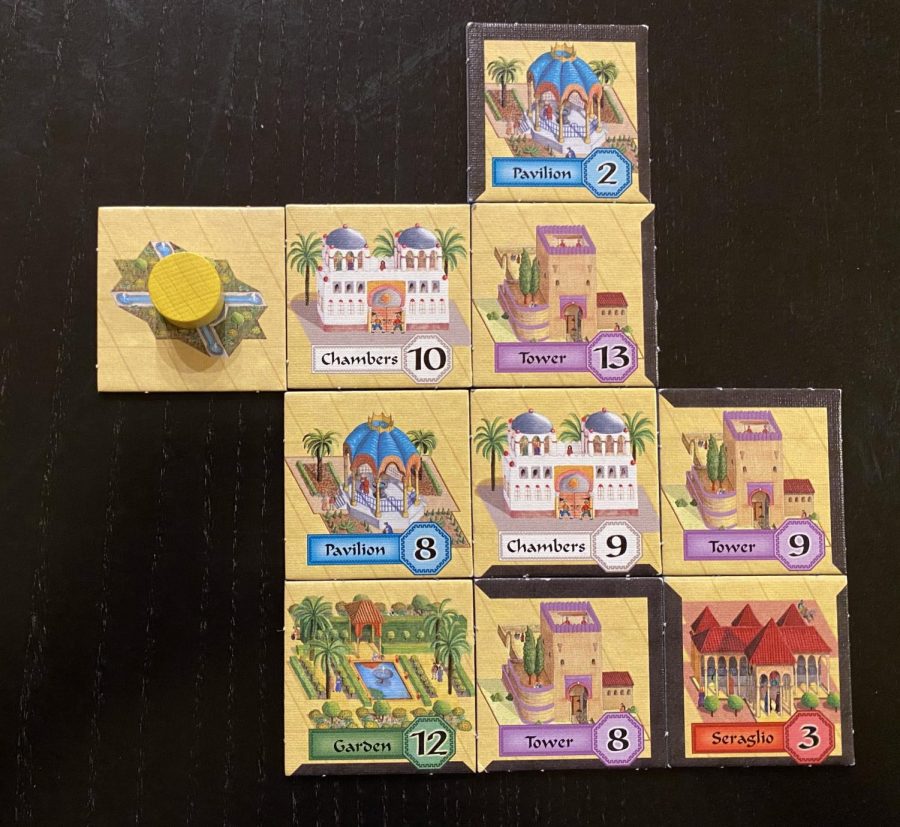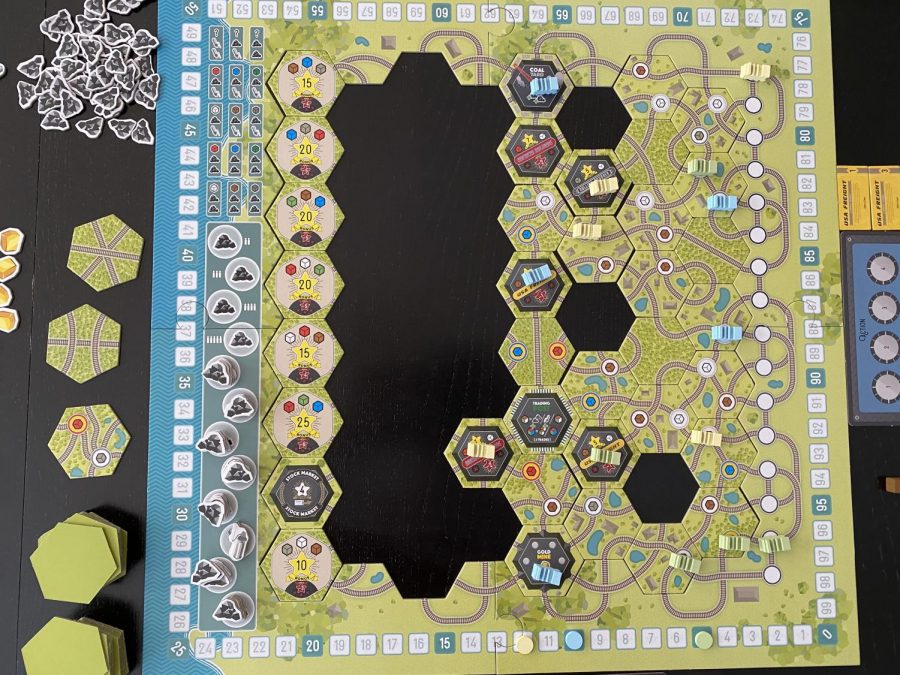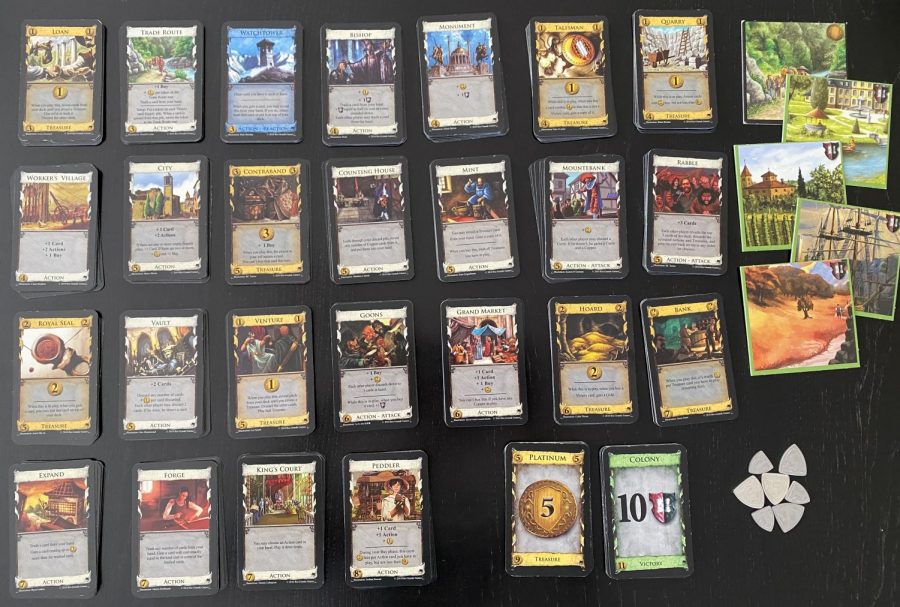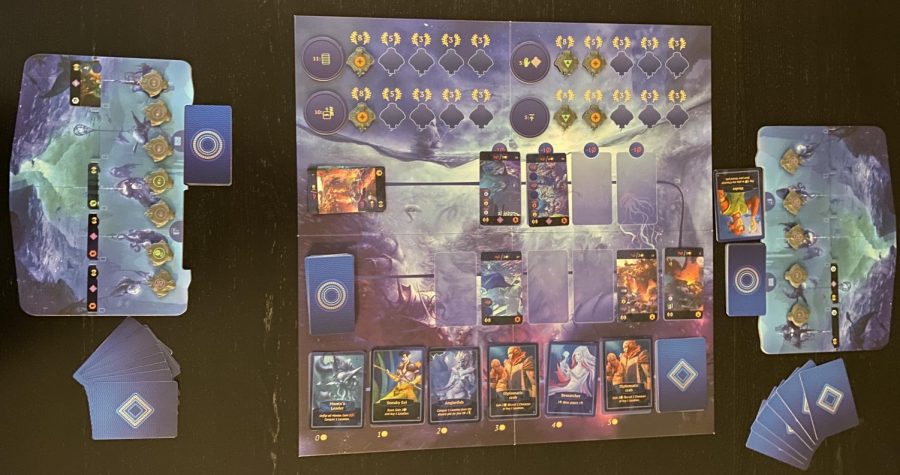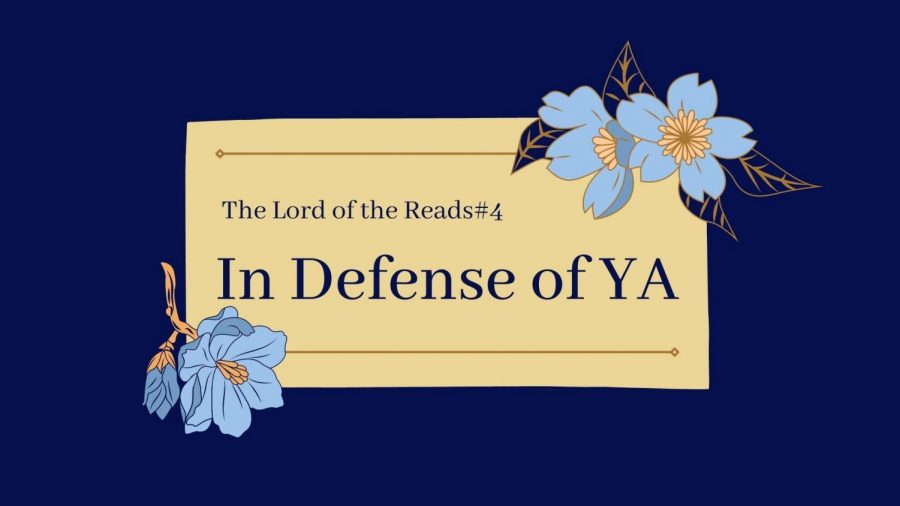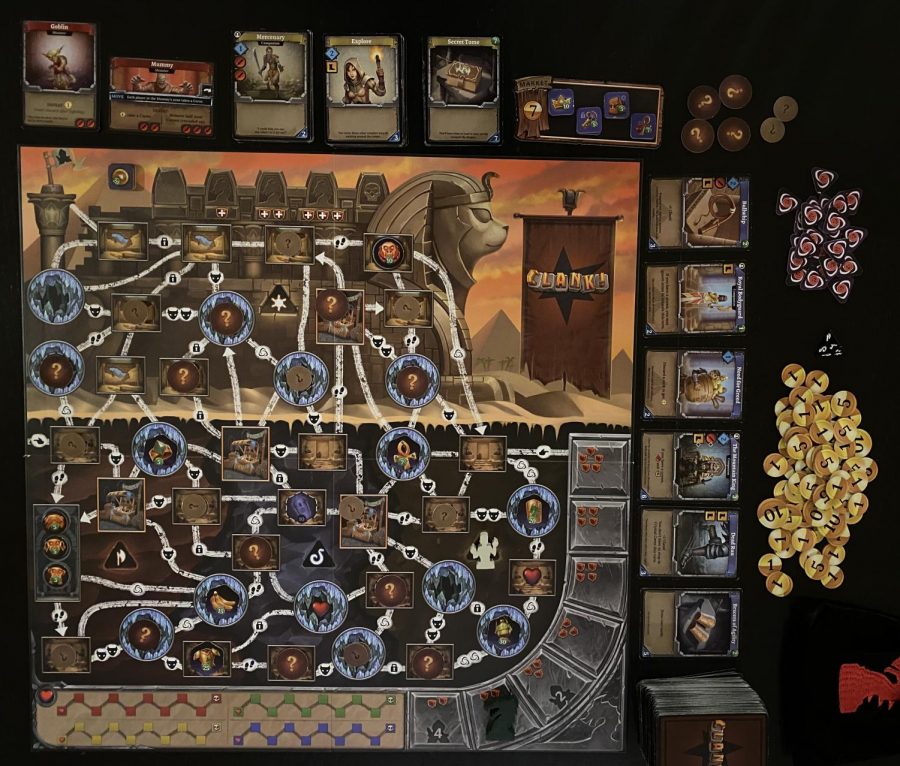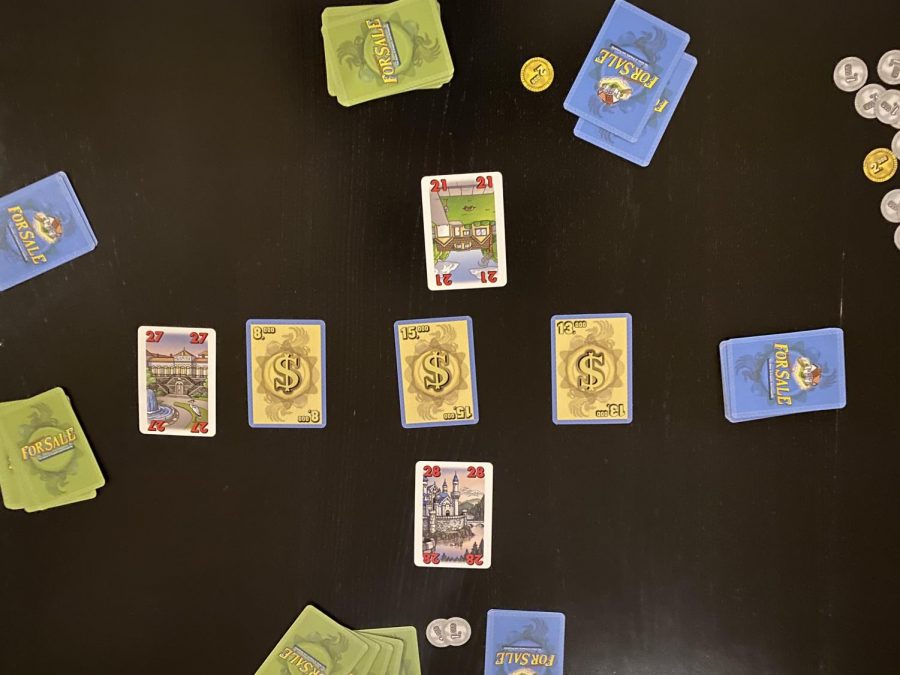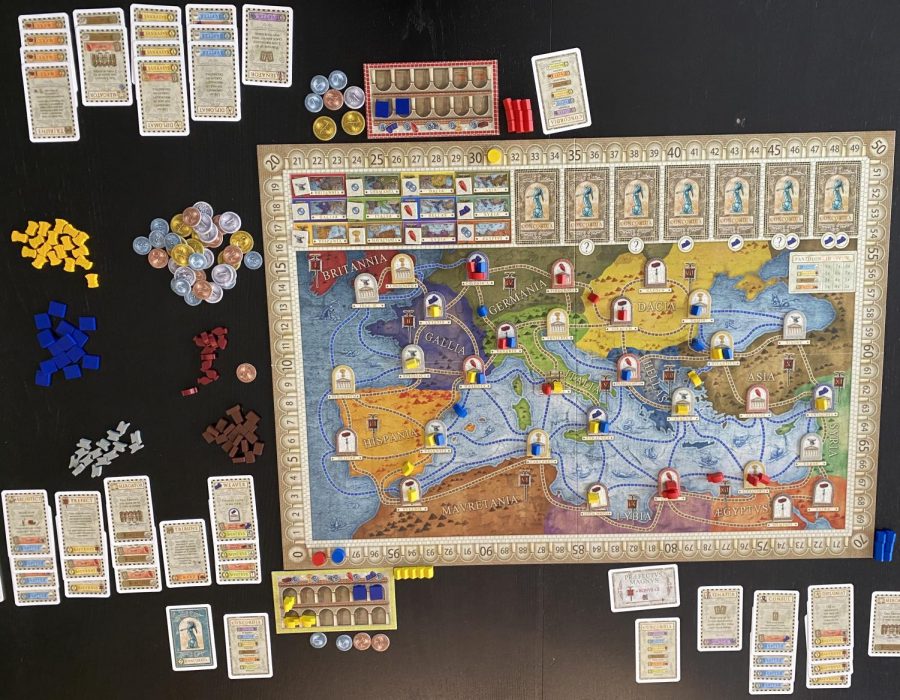This week, we’ll be taking a look at Alhambra, a gateway game published by Queen Games and designed by Dirk Henn. In Alhambra, players will be collecting currency cards of different types and spending them to add tiles to their Alhambra. Players must be careful how they build their Alhambras because tiles have walls that must line up. In addition, players will earn more points during the three scoring rounds if they have the most buildings of a particular type. I’ll show you how to play and then share my thoughts on whether Alhambra does a good job introducing people to board games.
How to Play
To start the game, each player will get a starting tile that they will build their Alhambra around and money cards that are randomly drawn from the top of the deck until they have a total value of at least 20. The money cards come in four different colors to represent different currencies and can be worth one through nine units.
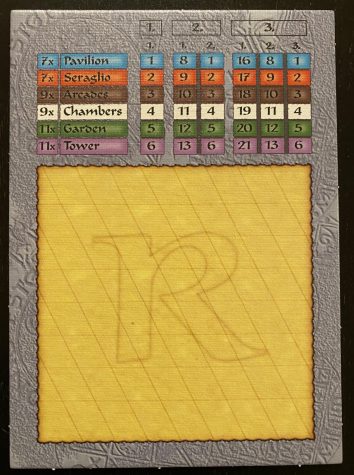
The building tiles are then put in a bag, and four of them are randomly pulled and placed on the four spots in the building market. Each spot is next to a symbol for one of the four currencies. The tile has a number on it that tells how much it costs, and the currency that it is placed next to denotes which currency must be paid to purchase that tile.
The game flows with players taking one of the three actions that will be discussed later. The game is interrupted two times when a scoring card is revealed from the currency card deck, and the last of the three scoring rounds occurs when there are not enough tiles left to replenish the building market. During a scoring round, players earn points for each building type if they have the most building tiles of that type. In the second and third scoring rounds, the point values increase, and a second and third place bonus is also given. Each player will also score one point for the length of their longest exterior wall around their Alhambra during each scoring round. Let’s explain the actions that players can take to understand how players can get building tiles and earn those points.
Taking Currency Cards

The first action that a player can take is taking currency cards. There are four currency cards face-up; remember that each one has a value and a currency type, denoted by its color. A player can take any face-up currency card and add it to their hand. However, a player can instead take multiple currency cards as long as all those currency cards’ total value is five or less. The currency type does not matter when taking cards.
Buying a Tile
A player can buy any tile from the building market by paying the tile’s cost in the currency type depicted next to the tile. The player discards all currency cards needed to reach or surpass the cost. No change is given for overpaying, but if a player pays with exact change, they immediately take an extra turn. Since the extra turn happens before refilling the building market, a player is limited to five turns in the rare scenario that they are able to buy all four tiles with exact change.
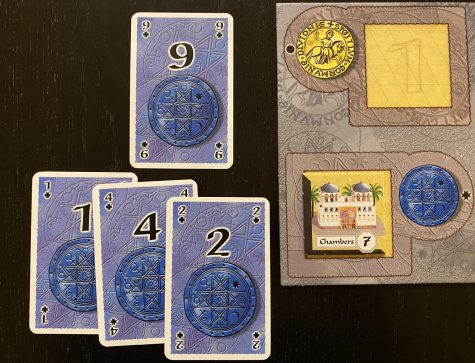
The tiles you buy are set aside and placed in your Alhambra after any additional turns that you take. When this happens, you may place the tile anywhere in your Alhambra as long as that placement follows certain rules. You must watch wall and no wall sides with all tiles, so wall matches wall and no wall matches no wall. You also have to be able to trace a path from your starting tile to every tile in your Alhambra without going through walls. Lastly, you cannot leave an empty space that is surrounded by four adjacent tiles. If you cannot or choose not to place your tile, you can put it on your reserve mat. Tiles on your reserve mat do not count during the scoring rounds, but they can enter your Alhambra in a more desirable position through the redesign action.
Redesigning your Alhambra
The redesign action allows a player to remodel their Alhambra. Players may do this to add a tile they couldn’t place before, open up a walled-up area, or change which building types they have. There are three ways that a player can do this. Firstly, they can simply place a tile from their reserve mat into their Alhambra. Secondly, they could choose to move a tile from their Alhambra to their reserve mat as long as removing the tile makes the placement of all tiles in the Alhambra legal. The last way to redesign your Alhambra is to swap a tile in your Alhambra with one from your reserve mat.
At the end of each turn and any extra turns, you will replenish the building market and row of currency cards. Other than that, you’ll want to keep your eye on who has the majority for each building type. When the three somewhat equally spaced out scoring rounds occur, you’ll want to have the majority of as many building types as possible and have a long wall, so you can get the most points and win.
Final Thoughts
Overall, I like Alhambra a lot because it works well as a gateway game. I can easily teach it to someone who hasn’t played many board games; most of the time, people can figure this game out with no issues at all.
For me, the mark of a great gateway game is that it is just as enjoyable for the person teaching the game as it is for the people learning it. Like my favorite gateway game, Ticket to Ride, Alhambra does meet this requirement. There are many captivating mechanisms for players who are learning the game, such as placing tiles and drawing cards, that are interesting and still somewhat similar to classic games. For experienced players who are teaching the game, more complicated ideas, such as getting majority control, when to overpay or use exact change, and how to design your Alhambra make the game experience enjoyable.
Alhambra is definitely a game that players will get better at each play. In the gateway game setting, experienced players do have a subtle advantage. However, it is not noticeable and does not take away any fun since the game itself is easy to play. Alhambra would fall under the category of games that are easy to follow the steps to play but more difficult to perform well. There are a few things that players have to understand since each of the three main actions has multiple ways to carry it out, but once players have figured out how to play, the game goes by quickly, and everyone can take their turn without questions.
In terms of criticism, there are two things that I have in mind. The first thing is that I think that the game drags on slightly longer than I think it should. The way the game has you put in the scoring cards sometimes makes the first one come too close to the beginning and the second one too close to the third. Because of that long break between scoring rounds, the game can get a little monotonous as players continue to take their turns anticipating a scoring card that isn’t coming for a long time. The second negative is that nothing changes from play to play, so the only thing that makes a game feel different is making a new strategetic discovery or the way that players are playing.
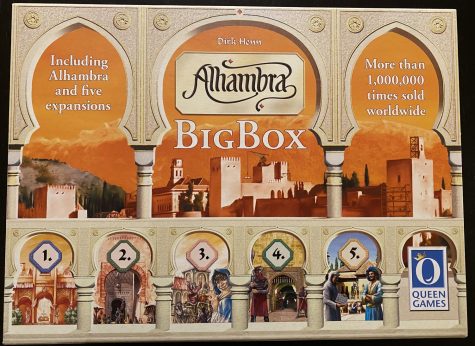
Other than those two things, I like everything about the game. The decisions are interesting and engaging, the artwork and components are great, and the game targets a wide audience. If you are looking for Alhambra, you can definitely find it online. If you think you want a little more than just Alhambra, there is a big box that contains some expansion modules that are difficult to get separately. I have the big box, but I will be reviewing the expansion modules in separate reviews. Either way, you should check out Alhambra if you like simple games or want something to get people into this hobby. I enjoy Alhambra quite a bit and will usually play it if it is suggested, so I’ll be giving it a 9 out of 10.
[star rating=”4.5″]

